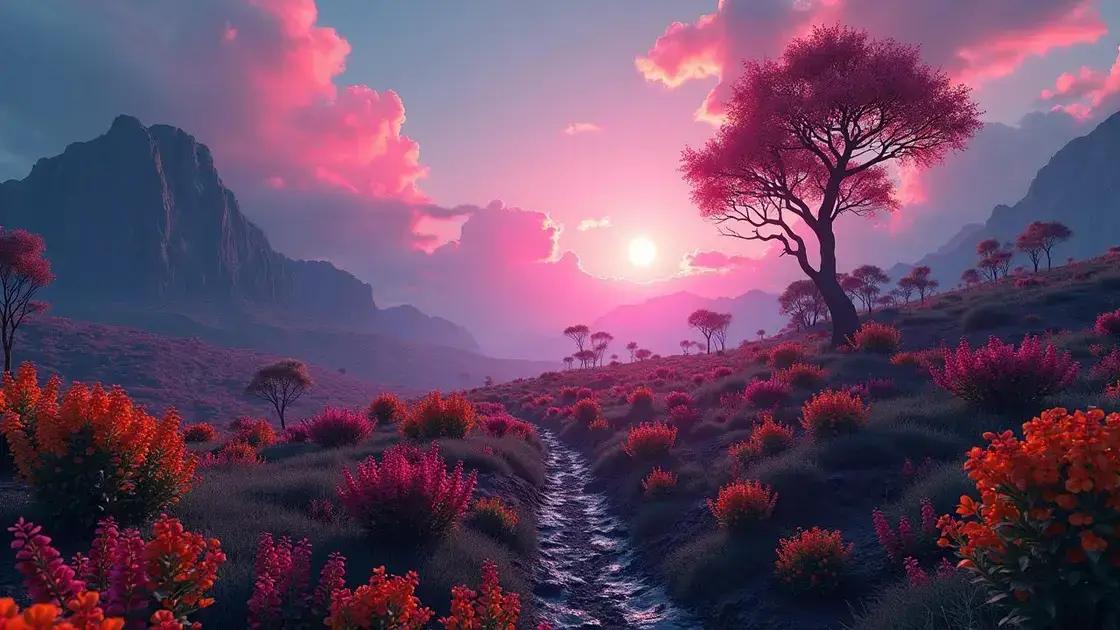How to Care for Hoya Plant: 7 Secrets for Thriving Growth
How to care for hoya plant enthusiasts often wonder about the secrets to keeping their beloved plants thriving. Each hoya variety comes with its unique quirks, making it essential to know how to nurture them properly. From the right watering schedule to perfect soil mix, uncover effective strategies to enhance your hoya’s health and vibrancy.
Table of Contents
ToggleBest watering schedule for hoya plants
Best watering schedule for hoya plants is essential for their vibrant health and growth. Hoya plants appreciate a well-balanced watering routine to prevent issues like root rot while ensuring adequate moisture.
Understanding hoya watering needs
- Water thoroughly when the top 1-2 inches of soil feel dry.
- Typically, water every 1-2 weeks, depending on the environment.
- In winter, reduce frequency as the plant enters a dormancy phase.
Signs of overwatering or underwatering
- Overwatering: Yellowing leaves, wilting, or mushy stems.
- Underwatering: Dry, crispy leaves or a droopy appearance.
Best practices for hoya watering
- Use well-draining potting mix to avoid waterlogged roots.
- Consider using a moisture meter for precise watering.
- Ensure pots have drainage holes for effective water management.
Seasonal watering adjustments
- Spring and summer: Increase frequency as growth phases accelerate.
- Fall: Gradually decrease watering as the plant’s growth begins to slow down.
- Winter: Water less frequently, allowing the plant to rest.
Watering method
Consider using the soak and dry method: saturate the soil until water drains from the pot’s bottom, then wait until the topsoil dries before the next watering.
Tailoring care based on conditions
Environmental factors like humidity and temperature can influence hoya watering needs. Higher humidity may require less frequent watering, while dry conditions will necessitate more regular attention.
By mastering the best watering schedule for hoya plants, you’re setting the stage for their flourishing health. For additional insights, consider exploring indoor gardening techniques.
Soil requirements for healthy hoya growth

Soil requirements for healthy hoya growth are crucial for nurturing vibrant plants. Selecting the right soil mix ensures that hoyas thrive and flourish in their environment.
Choosing the right soil mix
- Opt for well-draining potting soil to prevent water retention.
- A mix containing orchid bark, perlite, and peat moss works well.
- Avoid heavy garden soil, which can lead to root rot.
Understanding pH levels
- Hoya plants prefer a slightly acidic to neutral pH level (around 6.0 to 7.0).
- Testing soil pH can help you adjust if necessary.
Container considerations
- Use pots with drainage holes to support healthy root systems.
- Consider pots made of terracotta for improved aeration.
Signs of poor soil health
Monitor your hoya for indicators of unhealthy soil, such as:
- Yellowing leaves, which may signal overwatering or poor drainage.
- Stunted growth that suggests nutrient deficiencies.
Fertilizing for optimal growth
While discussing soil requirements, remember that nourishment is essential:
- Use a diluted, balanced fertilizer during the growing season.
- Consider slow-release fertilizers for consistent nutrient supply.
Customizing soil care
Hoya plants may require tailored care based on growth conditions. Assess the light and humidity levels to determine watering and fertilization frequency. Experimenting with different soil mixes can optimize your hoya’s health.
Ultimately, understanding the soil requirements for healthy hoya growth will empower you to provide the best care possible. For more gardening tips, consider exploring indoor gardening techniques.
Sunlight exposure: ensuring optimal light for hoyas
Sunlight exposure: ensuring optimal light for hoyas is critical for their growth and health. Hoya plants thrive in bright, indirect light, which promotes blooming and lush foliage.
Identifying the best light conditions
- Ideal light levels for hoyas are bright, filtered light.
- Avoid direct sunlight, as it can scorch the leaves.
- Eastern or western-facing windows provide optimal light exposure.
Understanding light intensity and duration
- Hoya plants typically require 6-8 hours of daily light for ideal growth.
- Monitor your plants for signs of light deficiency such as leggy growth or pale leaves.
Adjusting light for seasonal changes
- In spring and summer, ensure your hoyas receive plenty of light.
- During fall, gradually acclimate them to lower light levels.
- In winter, consider using supplemental grow lights if natural sunlight is limited.
Signs your hoya needs more light
Watch for these indicators to ensure your plant is receiving adequate sunlight:
- Stretched or elongated stems, indicating the plant is reaching for light.
- Pale or yellowing leaves might suggest light deprivation.
Using reflective surfaces
Enhance light exposure by utilizing reflective surfaces, such as:
- Mirrors or white walls can bounce additional light to the plants.
- Setting plants on shelves near windows boosts light availability.
By carefully managing sunlight exposure: ensuring optimal light for hoyas, you can cultivate healthy, thriving plants. For further gardening insights, consider exploring indoor gardening techniques.
In conclusion
Caring for your hoya plants is an enriching and rewarding experience. By understanding their watering schedule, soil requirements, and sunlight exposure, you can create a thriving environment for these beautiful plants. Remember that proper care not only promotes healthy growth but also enhances the chances of blooming.
For those looking to expand their gardening knowledge, consider exploring additional resources, such as tips on enhancing your indoor garden. With the right approach and care, your hoya plants will flourish beautifully!

